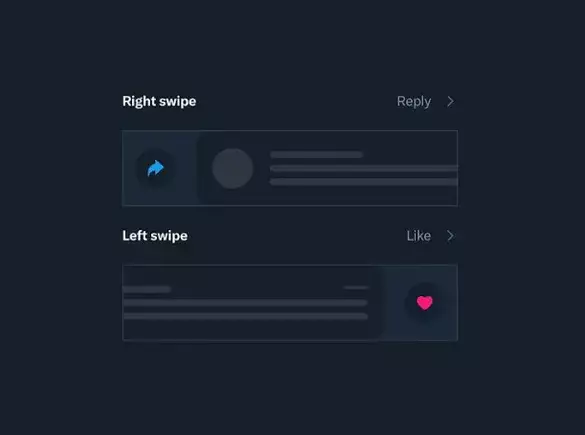In the fast-paced world of social media, user experience is paramount. As companies strive to create interfaces that are not only functional but also engaging, X’s recent decision to take a more cautious approach towards its user interface and interaction models deserves careful examination. This move, influenced by user feedback and concerns about usability, signifies a potential turning point for the platform.
Recently, May Ly, an engineer at X, introduced a new feature for iOS users allowing them to enable side-swiping options for liking and replying to posts. This update represents a significant yet subtle shift from the previously announced intention to completely eliminate in-stream interaction buttons. This cautious maneuver suggests that X is acknowledging the potential risks of alienating users with drastic changes. Instead of imposing a rigid system that might limit user engagement, X has pivoted to providing flexibility, thereby allowing users to customize their interaction with the platform.
By enabling users to enable or disable side-swipe functions at their discretion, X is not merely introducing a new feature; it is inviting users to engage with the platform in a way that feels more natural and intuitive. This is a notable departure from the previous strategy outlined by Elon Musk, which leaned towards a minimalist aesthetic that some users found disconcerting.
One of the most compelling aspects of this update is the feature that allows users to determine the action associated with their side swipes. For instance, users have the option to set their right swipe as a bookmarking action or even designate it as an “no action” option. This customization empowers users, allowing them to tailor their interaction style according to their preferences. It fosters a sense of ownership over the user experience and reduces feelings of frustration that can arise from unfamiliar interfaces.
While such levels of customization are not commonly found in social media platforms, they could lead to the emergence of new behavioral patterns among users. By encouraging users to explore different ways of engaging with the app, X may promote a culture of interaction that aligns more closely with the needs of its user base.
When Musk first announced plans to phase out traditional engagement buttons, concerns were voiced regarding the impact this would have on user interaction. Many users predicted that an absence of visible engagement options could lead to confusion, particularly for new users unfamiliar with the platform’s interface. Assessing this concern demonstrates that X is not oblivious to the apprehensions of its community. Instead, the company has shown a willingness to adapt and refine its strategies based on user feedback.
The initial push for a cleaner timeline—one stripped of all but the most essential information—may have been driven by aesthetic considerations. However, it became apparent that aesthetic beauty must be balanced with usability. X’s adaptation signals a growth in understanding that blind adherence to design principles can come at the cost of user satisfaction.
While the current update allows for more nuanced user interaction, it still raises the question: will X eventually phase out all traditional engagement features as originally planned? It remains to be seen whether this cautious approach marks a temporary solution or the precursor to more sweeping changes down the line. What is evident, however, is that X is choosing a path of collaboration and adaptation instead of outright removal, suggesting that user behavior will play a pivotal role in shaping future iterations of the platform.
The transition of X’s interaction model reflects a broader trend within tech companies: the necessity to place user experience at the forefront of design decisions. By introducing flexible side-swiping options while retaining traditional engagement buttons, X is pioneering a more thoughtful approach to its user interface. The implications of this shift could significantly influence how users interact with social media in the future, emphasizing the importance of user feedback in driving design evolution.


Leave a Reply
You must be logged in to post a comment.